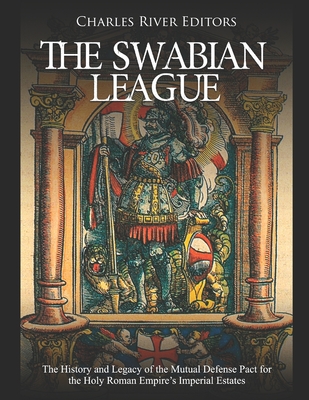The Swabian League: The History and Legacy of the Mutual Defense Pact for the Holy Roman Empire's Imperial Estates

The Swabian League: The History and Legacy of the Mutual Defense Pact for the Holy Roman Empire's Imperial Estates
*Includes pictures
*Includes a bibliography for further reading
Despite the pope's aversion to temporal glory, his authority tended to fill the vacuum in the West left when the last Western Roman emperor, Romulus Augustus, was deposed in 476. The pope would continue to do so until 800, when Charlemagne would allow himself to be crowned Emperor of the West in Rome upon receiving his crown from Pope Leo III. This created modern Europe and was the culmination of two centuries of papal policy aimed at securing its independence from the Byzantine Empire in Constantinople.
Before Charlemagne's coronation, there had been no formal break with Constantinople, but recognizing Charlemagne aimed to ensure the Roman Empire was reborn in the West. For the papacy, the new empire, now commonly referred to as the Holy Roman Empire, secured its independence from Constantinople since the new emperor had received his crown from the Church. The popes maintained and would continue to maintain for centuries that the imperial power lay in their hands as the heirs and custodians of ancient Rome, and that they had delegated that power to the King of the Franks. The papacy would guard this doctrine jealously, and for centuries it held that no man could call himself emperor until the pope had placed the Crown of Charlemagne upon his head.
Naturally, many Holy Roman emperors disputed the pope's interpretation of their authority, and the battles between popes and emperors shaped European history for much of the Middle Ages. Pope Gregory VII (r. 1073-1085) famously declared that the pope had no earthly judge and that he might depose emperors and absolve their subjects from the oaths of allegiance. He demonstrated this power by forcing Emperor Henry IV, in penitential garb, to wait upon him in the snow outside the walls of Canossa, and after three days the pope deigned to absolve him from excommunication. For a time, the popes were masters of Europe, but in the end their power was eroded by the growing tide of nationalism, religious indifference, and the papacy's own corruption.
As this suggests, the Holy Roman Empire was a fascinating institution as well as one of the most perplexing and contradictory. It was both German and universal. It was created by the Catholic Church, yet in the end enshrined confessional freedom in its constitution. It was both an empire and a collection of loosely federated principalities and city-states. It was Roman, but based in Germany, an
PRP: 86.34 Lei
Acesta este Pretul Recomandat de Producator. Pretul de vanzare al produsului este afisat mai jos.
77.71Lei
77.71Lei
86.34 LeiLivrare in 2-4 saptamani
Descrierea produsului
*Includes pictures
*Includes a bibliography for further reading
Despite the pope's aversion to temporal glory, his authority tended to fill the vacuum in the West left when the last Western Roman emperor, Romulus Augustus, was deposed in 476. The pope would continue to do so until 800, when Charlemagne would allow himself to be crowned Emperor of the West in Rome upon receiving his crown from Pope Leo III. This created modern Europe and was the culmination of two centuries of papal policy aimed at securing its independence from the Byzantine Empire in Constantinople.
Before Charlemagne's coronation, there had been no formal break with Constantinople, but recognizing Charlemagne aimed to ensure the Roman Empire was reborn in the West. For the papacy, the new empire, now commonly referred to as the Holy Roman Empire, secured its independence from Constantinople since the new emperor had received his crown from the Church. The popes maintained and would continue to maintain for centuries that the imperial power lay in their hands as the heirs and custodians of ancient Rome, and that they had delegated that power to the King of the Franks. The papacy would guard this doctrine jealously, and for centuries it held that no man could call himself emperor until the pope had placed the Crown of Charlemagne upon his head.
Naturally, many Holy Roman emperors disputed the pope's interpretation of their authority, and the battles between popes and emperors shaped European history for much of the Middle Ages. Pope Gregory VII (r. 1073-1085) famously declared that the pope had no earthly judge and that he might depose emperors and absolve their subjects from the oaths of allegiance. He demonstrated this power by forcing Emperor Henry IV, in penitential garb, to wait upon him in the snow outside the walls of Canossa, and after three days the pope deigned to absolve him from excommunication. For a time, the popes were masters of Europe, but in the end their power was eroded by the growing tide of nationalism, religious indifference, and the papacy's own corruption.
As this suggests, the Holy Roman Empire was a fascinating institution as well as one of the most perplexing and contradictory. It was both German and universal. It was created by the Catholic Church, yet in the end enshrined confessional freedom in its constitution. It was both an empire and a collection of loosely federated principalities and city-states. It was Roman, but based in Germany, an
Detaliile produsului








